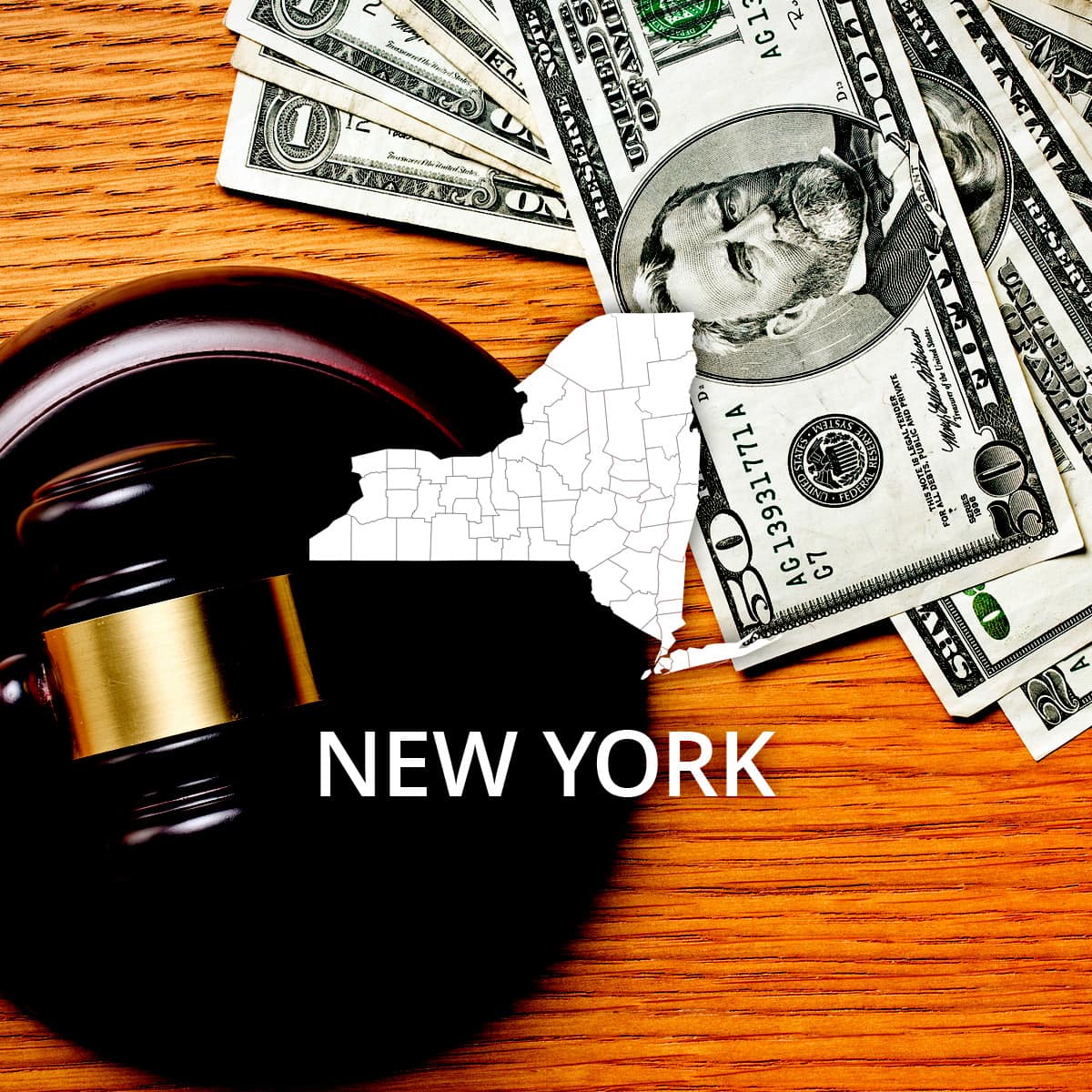 Multiple Bankruptcies: How Often You Can File One?
Multiple Bankruptcies: How Often You Can File One?
Table of Contents
 How to File Bankruptcy in New York
How to File Bankruptcy in New York
 According to the 2005 Bankruptcy Act, all courts must adhere to federal guidelines for bankruptcy. There are four districts in New York with sixteen District Bankruptcy Courts located throughout the state. The most commonly filed types of bankruptcies are Chapter 7, Chapter 11, Chapter 12 and Chapter 13.
According to the 2005 Bankruptcy Act, all courts must adhere to federal guidelines for bankruptcy. There are four districts in New York with sixteen District Bankruptcy Courts located throughout the state. The most commonly filed types of bankruptcies are Chapter 7, Chapter 11, Chapter 12 and Chapter 13.
 Types of Bankruptcy and Terms
Types of Bankruptcy and Terms
Chapter 7, or straight bankruptcy, eliminates the most unsecured debt and is an attractive choice to those with fewer assets and a high debt to low income ratio. Non-dischargeable debt, from sources like child support, back taxes and student loans, remain the responsibility of the petitioner. Often unsecured debt from medical bills or credit card companies can be mostly eliminated.
Another type of bankruptcy that allows the petitioner time to repay debt and protects from foreclosure or repossession of assets is called Chapter 13. This code reorganizes debt so that it can be minimized and repaid by the debtor, typically in a timeframe of 3 to 5 years. Petitioners who require debt relief but have a regular income and more assets often choose Chapter 13.
Businesses can file for Chapter 11 or Chapter 12 bankruptcy. Each is a reorganization type of bankruptcies and generally allows for 3 to 5 years for repayment of debt. Businesses who continue to make payments can remain in operation even after filing for Chapter 11 bankruptcy. Family businesses, like farmers and fishermen, are eligible for Chapter 12 bankruptcy to reorganize and pay off their debts.
Official bankruptcy forms for the U.S. Bankruptcy Courts are available at https://www.uscourts.gov/forms/bankruptcy-forms or RecordsFinder.com Court Forms Section.
 Steps to Filing Bankruptcy
Steps to Filing Bankruptcy
The first required step for any debtor actually occurs within 6 months before filing for bankruptcy. The 2005 Bankruptcy Act requires that all petitioners receive credit counseling prior to making their plea. Some individuals are able to make arrangements on their own to get out of debt, while others choose the route of bankruptcy. For those who file bankruptcy a few more steps are to be achieved before the process is complete.
The Means Test determines for which type of bankruptcy and individual is eligible. The income over the last 6 months is compared to the income of all other wage earners in New York. If the petitioner's income is less than the median income for the state, he or she is eligible for Chapter 7 or Chapter 13. Those who have a higher income have a single option, Chapter 13.
Gathering paperwork is the next objective to prepare for court. Many documents are required, including, but not limited to: tax returns for 2 years, property deeds, vehicle titles, records of any recent major financial transaction, a list of all debts, loan information, an inventory of assets and monthly expenses. For those filing for Chapter 13, a detailed summary of how debt can be repaid in 3 to 5 years is also required.
These documents, all the necessary forms, and the debt repayment summary are given to the court and referred to as "the schedule." Some petitioners find it very useful to have legal counsel at this time, while others choose to file for bankruptcy on their own. The cost for Chapter 7, which can sometimes be waived, is $306. Chapter 13 has a fee of $281 and cannot be waived, but can be paid in installments if necessary. The attorney fees are the responsibility of the petitioner.
Once the court has received the schedule, an automatic stay is issued. This keeps the creditors from contacting the debtor and prevents any further action in the case of foreclosure. A court appointed trustee reviews the case and determines what non-exempt assets can be liquidated to repay debt for the petitioner. Another responsibility of the trustee is to arrange a 341 meeting; here the creditors and debtor meet to negotiate terms for repayment. If no agreement can be found, a judge will intervene.
Lastly, all petitioners are required to finish their bankruptcy by completing a financial management course. Chapter 13 petitioners must also continue to make payments as agreed upon by the court and detailed in the repayment summary.
 Location Specific Information
Location Specific Information
New York is divided into four districts for bankruptcy proceedings with a district in the North, East, South, and West. The New York Eastern Bankruptcy Court has locations in Brooklyn, Hauppauge, and Westbury. The North District has 3 courts which are situated in Albany, Syracuse, and Utica. The Southern District covers New York, Poughkeepsie, and White Plains. The Western District has the most locations, with courts in the following cities: Batavia, Buffalo, Mayville, Niagara Falls, Olean, Rochester, and Watkins Glenn.




